From its opening to tourists in 1993, Vietnam's geography, combined with limited rail and air alternatives, made overland travel along Highway 1 the most common way to explore the country. The Reunification Express train that hobbled between Saigon and Hanoi was excruciatingly slow and Vietnam Airlines' fleet of Russian Tupolev aircraft serviced a limited network that was considered unsafe by many.
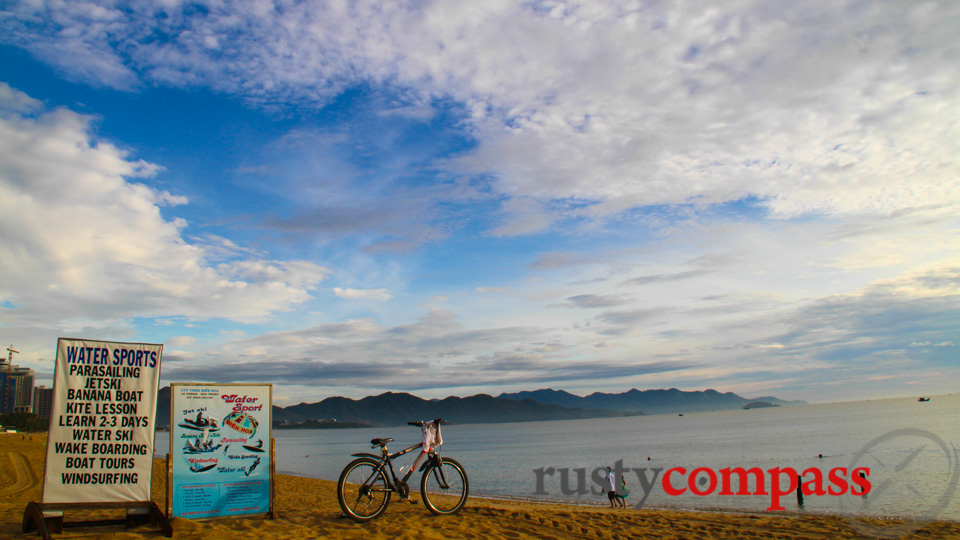
Photo: Mark BowyerNha Trang today still has plenty of charm
So, from Saigon, Travel Indochina's first tour, The New Vietnam, headed straight up the coast to Nha Trang. Dalat wasn't added to our itineraries until the following year.
This video is a selection of clips I shot in Nha Trang taken on a trial tour run by Paul Hole and I in March 1993 with a group of friends. Travel Indochina was founded later that same year.
The first stage of the journey north was along what was known as the American Highway. At the time it was the best road in Vietnam and the country's only dual carriageway. It had been built to handle military transport during the Vietnam War between Saigon and the huge US base at Bien Hoa.
From Bien Hoa, Highway 1 started to narrow. As we passed through the rubber plantations of Dong Nai province that dated back to French times, it began to look more like a minor country road than the nation's main artery. But this was Vietnam's transport backbone.
Four hours out of Saigon, we passed through a serene coastal town, with a small harbour packed with fishing boats. It was Phan Thiet. It didn't leave much of an impression. A few kilometres away, Mui Ne, a sleepy palm-lined stretch of beach, dotted with small villages, was yet to be discovered.
Two years later, Mui Ne's transformation began modestly when Daniel and Jutta Arnaud established Coco Beach Resort the first in the area.
A trickle of new developments followed before Mui Ne beach was swamped by developers at the beginning of the millennium.
Mui Ne is now one of Vietnam's major beach destinations - especially popular with kite surfers. Coco Beach remains a favourite place to stay as well.
Beyond Phan Thiet, we travelled through parched, rocky, coastal country, dotted with occasional dragon fruit plantations. The exotic dragon fruit with its bright purple skin was a constant source of curiousity for travellers. For most though, the less than exotic flavour experience was a disappointment.
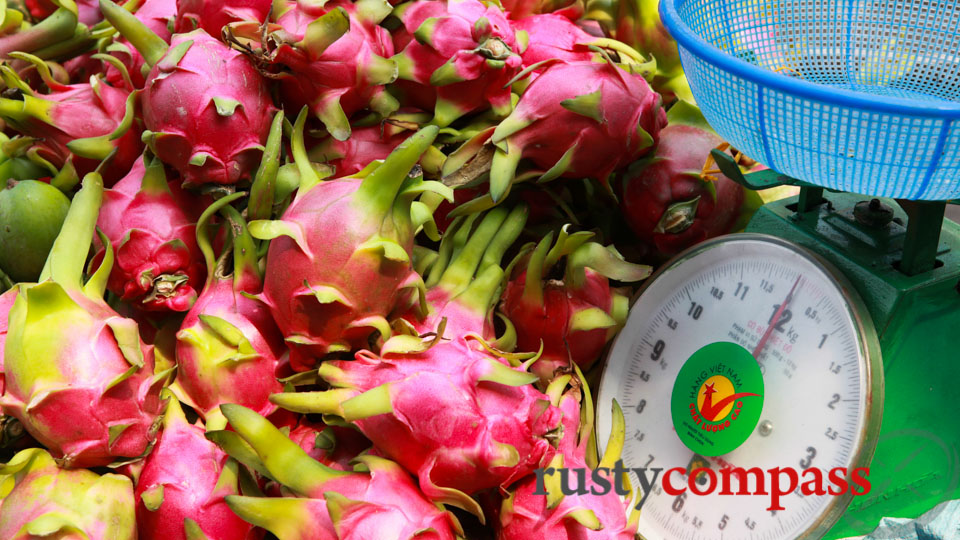
Photo: Mark BowyerDragon fruit. More exotic in look than flavour.
After 10 plus hours on the road we arrived at the sleepy beachside town of Nha Trang. In 93, Vietnam's only real beach destination was sublimely mellow. We all loved it - 2 days of sun, sea and seafood.
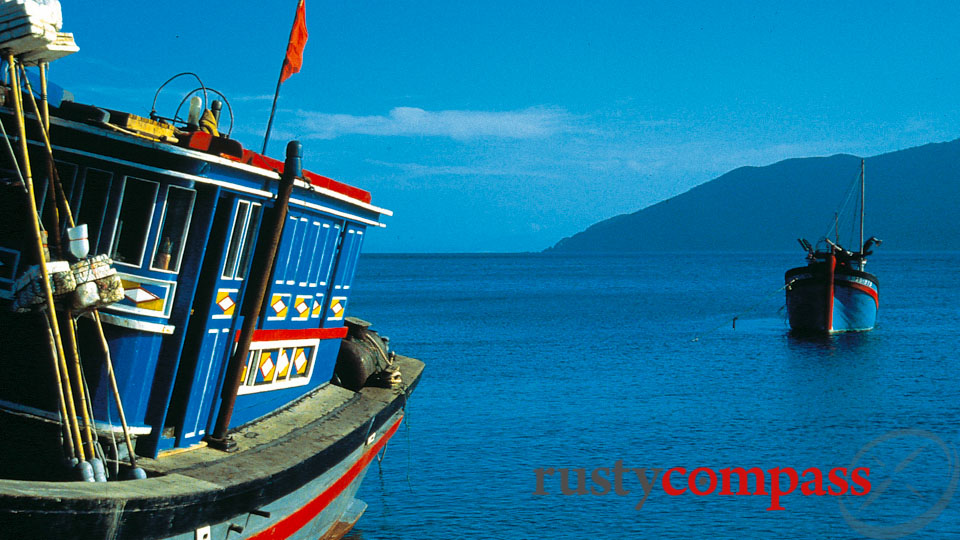
Photo: Mark BowyerNha Trang 1993
Tourism barely existed in Vietnam in the 80s and early 90s. But Nha Trang continued to receive a trickle of travellers from the former Soviet states. A sizeable Russian military presence continued at Cam Ranh Bay until the early 90s as well, which provided another modest source of tourists.
I remember a Russian dolphin instructor working at the Nha Trang aquarium and a handful of Russian tourists on my first visit in 1991. By 1993, the Soviet Union had ceased to exist and Nha Trang's tiny tourism market had evaporated.
Twenty years later and the Russians are back as some of the biggest fans of Vietnam's beaches.
In 1993, at any one time, there couldn't have been more than 100 tourists in Nha Trang. They were spread across a handful of 1 or 2 star hotels. There was no domestic travel industry - the locals too poor to take holidays.
The French, keen to reconnect with their former colony, were the first to visit Vietnam in large groups. And then there were companies like Travel Indochina offering small group travel as well. A small number of trailblazing backpackers were also discovering Asia's newest destination.
Travel Indochina's first few years of tours to Nha Trang stayed at the Grand Hotel at 44 Tran Phu St. It was an impressive colonial era mansion that had seen far better days - decades before our arrival. It was the accommodation of choice for visiting government delegations and we chose it for its location, the sweeping views across the bay and the remnants of colonial charm that could be conjured if you tried hard.
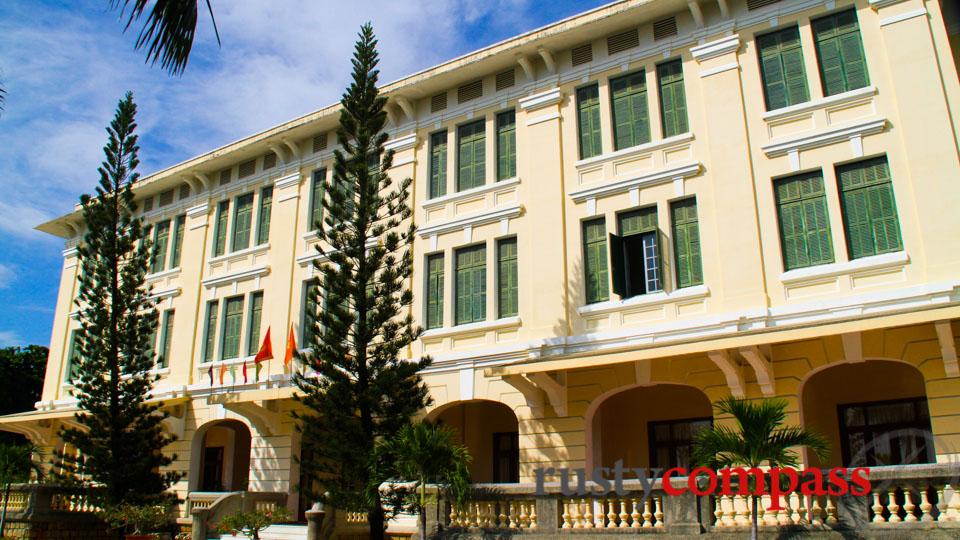
Photo: Mark BowyerThe Grand Hotel - largely unchanged since 93.
Located on a prime corner block in the centre of town directly opposite the beach, we speculated for years about its takeover by a luxury resort developer. 20 years later, The Grand is still an unloved, wasted state asset.
State-run hotels were the standard at the time and they had a quirky appeal. Service was poor, and facilities were mediocre. But we usually ended up making great friends with the staff who were excited to see tourists finally arriving in their country. What they lacked in service slickness they made up for with friendly, natural helpfulness. Many of them continue to work at the same hotels to this day.
Some travellers saw some romance in the Grand. Others were less convinced. We assured them that the other options in town were no better.
I recall thinking on that first tour, that worse lay ahead at our next stop - Quang Ngai.
After freshening up as best you could at the Grand, we jumped on cyclos to Thanh Lich (Elegant) Restaurant - a simple seafood BBQ outfit back towards town that quickly became a Nha Trang favourite.
Thanh Lich was owned by a refined French speaking local family. They were wonderful people and their presence was as important as the delicious food they served. A few years after, and like so many before and since, they moved to the US.
Lac Canh, also a BBQ restaurant, was our second dinner venue. A much expanded Lac Canh still exists and is packed with locals and travellers each night.
The Nha Trang boat trips that have been a fixture in most Nha Trang tours for two decades were just beginning in 1993.
Two enterprising early middle-aged local women, Mamma Hanh and Mamma Linh ran party boats for backpackers with plenty of cheap booze, dope, some snorkelling - and a tasty seafood lunch - all for $5.
At Travel Indochina, we had to work out something more mainstream and we found an alternate boat operator - minus some the vices of the backpacker cruise.
There was a wreck protruding from the the middle of Nha Trang harbour. It was a supply ship that had been sunk during the war. That was all were told. A couple of years later, it was finally dragged away. It was off limits to travellers.
The cruises were a huge hit with the first wave of backpackers to Nha Trang and word quickly got out. But the two mammas were constantly battling with the authorities. Mamma Hanh and Mamma Linh had something everyone wanted a piece of - an ability to make a dollar out of foreign visitors. The locals knew Vietnam's tourism star was rising and this was a new way to make a buck. The authorities were determined not to miss out too.
Vietnam's tourism industry has been a great source of opportunity in what is, for the most part, a patronage based economy. Getting rich in Vietnam has mostly been more about who you know than what you know. Tourism has been an exception though. Cyclo drivers, boatmen, tour guides, xe om drivers, waitresses and family restaurateurs - often those from the wrong side of the political and economic street - have gone on from their humble beginnings to make fortunes on the back of their entrepreneurial savvy.
From the mid 90s Travel Indochina's Nha Trang boat trip was run by a former cyclo driver, Mr Lang, who went on to bigger things.
I've no idea what ultimately became of Mamma Linh, Mamma Hanh or Mr Lang. There are plenty of tales but I don't know the truth. The only person from that time I still see in Nha Trang is my old cyclo driver, Mr Dung. He now switches between the cyclo and the xe om (motorcycle taxi) but life hasn't changed much for him.
While 44 Hotel - (the Grand name was later removed as a bad joke) also sits unchanged, I was surprised when in 2006, the large war memorial opposite the hotel was demolished. I'd assumed war memorials would be sacrosanct in a country that's suffered to much in war. What was even more surprising, was that the memorial was removed to make way for an unsightly viewing tower that looks over the bay.
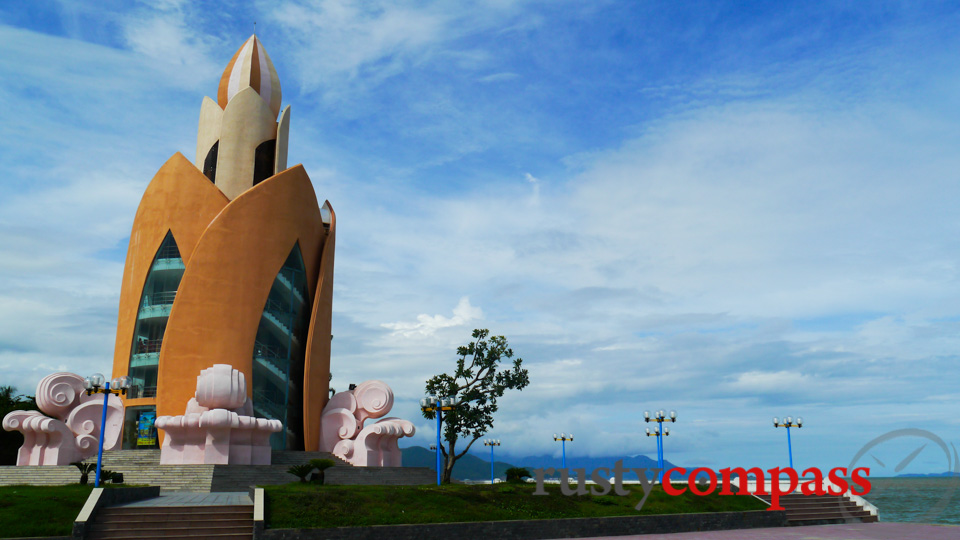
Photo: Mark BowyerProgress? A solemn war memorial was removed to make way for this monstrosity.
Even as a foreigner it seemed an unfortunate decision - both for the loss of a solemn memorial and because of what replaced it.
These days, Nha Trang is booming. It's a favourite beach destination for the now sizeable domestic market. Foreign travellers are still flocking there for its outstanding climate and bay, laid-back vibe, cheap seafood and booze.
A once quiet beachfront is now lined with high-rise international hotels. The backpacker party scene has grown exponentially. The boat trips, which now also offer scuba diving, remain a big hit. Some of Vietnam's most luxurious resorts are located in within range of Nha Trang too.
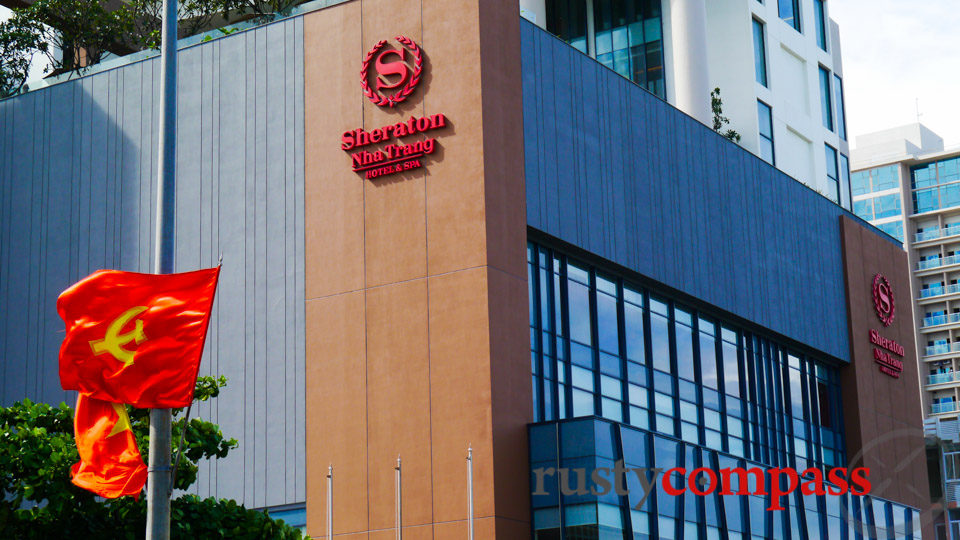
Photo: Mark BowyerInternational hotels now line Nha Trang's beach strip.
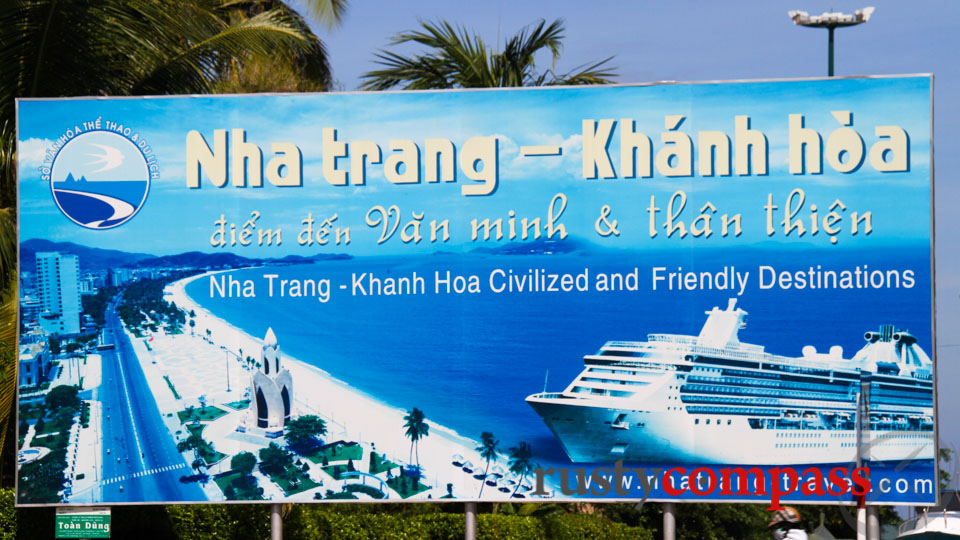
Photo: Mark BowyerEnticing billboard.
These days, Nha Trang is your classic overdeveloped beach strip facing all the problems that its predecessors the world over have; pollution, crime as well as cultural and environmental degradation. But there's still a thriving town of local life back off the beach that's well worth exploring.
The streets are far more subdued than Saigon and Hanoi making cycling an excellent option too. A cycle back along the river is an especially nice way to spend half a day.
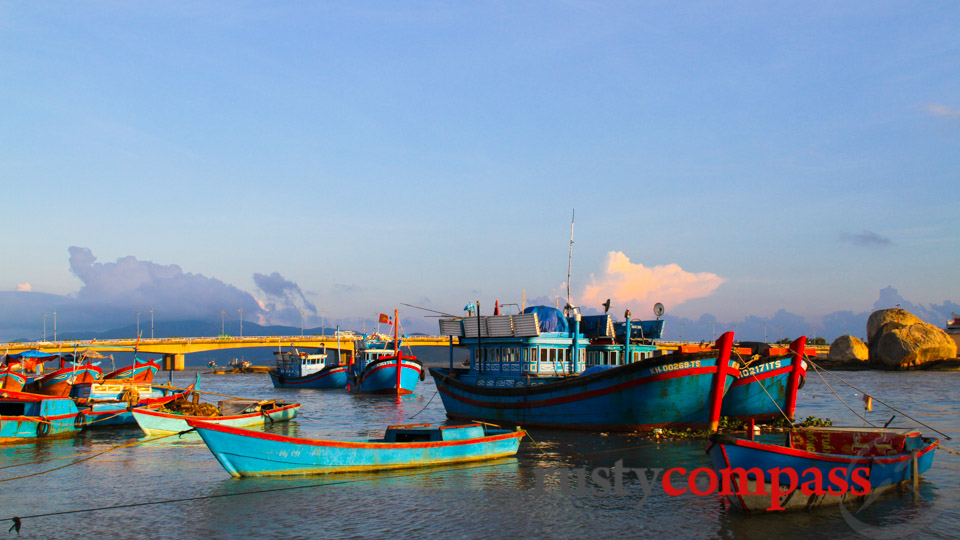
Photo: Mark BowyerNha Trang still has a thriving local life.
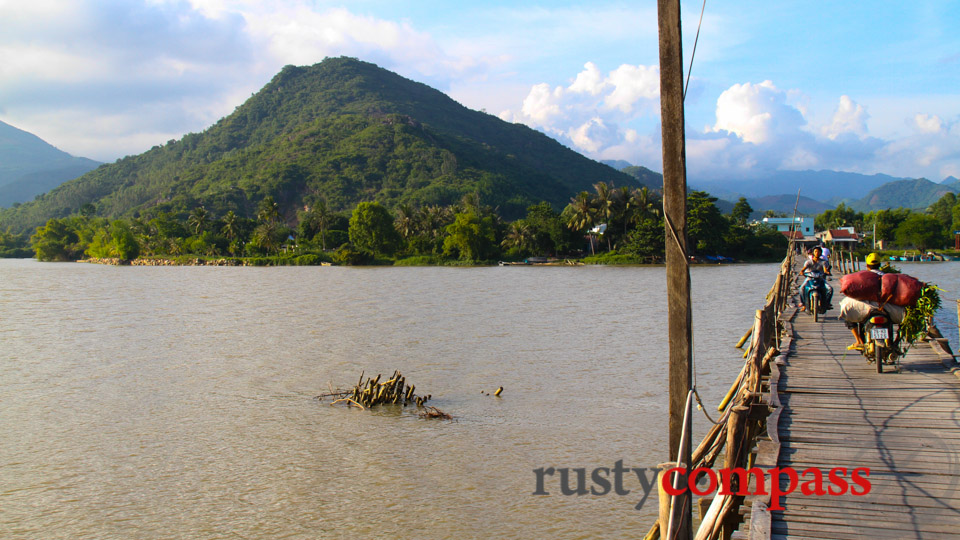
Photo: Mark BowyerNha Trang - cycling upriver is a great way to spend half a day.
Despite its failings, Nha Trang still sends plenty of happy travellers home and even retains some of the charm of the classic beach town it once was. And if Vietnam needed a mass market beach destination, Nha Trang was probably the best place for it.
Note:
I left Travel Indochina in 2006 and have had no involvement with the company since that time. It is now owned by a large international travel corporation.





There are no comments yet.